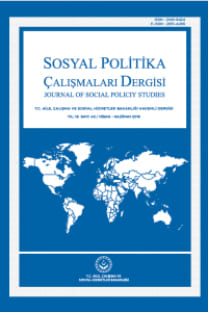Televizyon Programları, Reklamlar ve Çocuklar
Bu çalışma; ulusal ve uydu üzerinden yayın yapan televizyon kanallarında çocuğa yönelik programlar ve bu programlarda yayınlanan reklamların içerik analizini yapmayı, reklamlarda kullanılan dil, söylem ve yöntemleri ortaya çıkarmayı amaçlamaktadır. Bu amaca ulaşabilmek amacıyla araştırmada çocuk programları ve bu programlarda yayınlanan reklamların içeriği betimlenirken nicel ve nitel olmak üzere iki ayrı yöntem kullanılmıştır. Nicel araştırma kapsamında programlar ve reklamlar için iki ayrı Değerlendirme Formu geliştirilmiştir. Nitel araştırma kapsamında ise çocuk programı yapımcıları, çocuk televizyonu genel yayın yönetmenleri, reklam ajansı genel müdürleri ve reklamla ilgili STK başkanları ile derinlemesine görüşmeler yapılmıştır. Araştırma sonucunda, çocuk programları ve reklamların içeriği, çocuğun fiziksel, bilişsel/algısal, duygusal/sosyal ve dil gelişimi, şiddet, tüketim kültürü, modelleme, aile değerleri ve yapısı açısından değerlendirilmiş; çocuk programı yapımcılarına, ailelere ve kurum ve kuruluşlara birtakım öneriler sunulmuştur.
TV Programs, Advertisement and Children
This study aims to make content analysis of TV programs for children and the advertisements broadcasted in several channels through national cables or satellites in Turkey, and reveal the methods, discourse and the language used in those ads. To accomplish this main goal, two separate methods, qualitative and quantitative techniques were used in this research while examining the content of these programs for children and the ads that came with them. In addition, two distinct Evaluation Forms were developed for programs and commercials within the scope of quantitative research. As far as the qualitative aspect of this research is concerned, in depth interviews were implemented with producers of these programs, general directors of TVs for kids, general directors of advertisement agencies and the leaders of civil society organizations that have to do with commercials. In the conclusion, the contents of these programs and ads are discussed and assessed from the perspective of children`s physical, cognitive/perceptual, emotional/social and linguistic development, and, moreover, from the angle of consumer culture, violence, modeling and family values and structures. In the end, some recommendations were made for child program producers, families and certain institutions and organizations.
- ISSN: 2148-9424
- Yayın Aralığı: Yılda 4 Sayı
- Başlangıç: 2012
- Yayıncı: Aile,Çalışma ve Sosyal Hizmetler Bakanlığı
